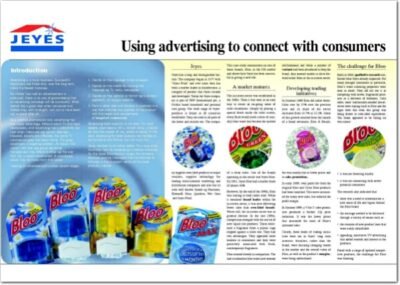The concept of the promise gap refers to the disparity between what a business promises to deliver and what it actually provides to its customers. This gap can manifest in various forms, such as unmet expectations regarding product quality, service delivery, or customer support. The promise gap is not merely a theoretical construct; it has tangible implications for customer loyalty, brand reputation, and overall business performance.
When customers perceive a gap between the promises made by a company and their actual experiences, it can lead to dissatisfaction and a loss of trust. To illustrate this concept, consider a scenario where a company advertises a new smartphone with cutting-edge features and exceptional battery life. If customers purchase the device only to find that it does not perform as advertised, they experience a promise gap.
This gap can be particularly damaging in industries where competition is fierce, as customers may quickly turn to alternative brands that better meet their expectations. Understanding the promise gap is crucial for businesses aiming to foster strong relationships with their customers and maintain a competitive edge in the market.
Summary
- Promise gap refers to the disparity between what a business promises to deliver and what it actually delivers to its customers.
- Causes of promise gap in business include unrealistic marketing claims, poor internal communication, and inadequate resources or capabilities.
- Promise gap can lead to decreased customer satisfaction, loss of trust, and ultimately, customer churn.
- Strategies to bridge the promise gap include setting realistic expectations, delivering on promises, and actively seeking customer feedback.
- Maintaining transparency in business is crucial for building trust and managing customer expectations.
Identifying the causes of promise gap in business
Several factors contribute to the emergence of the promise gap in business. One primary cause is miscommunication during the marketing and sales processes. Companies often employ persuasive language and exaggerated claims to attract customers, which can lead to unrealistic expectations.
For instance, a travel agency might promote a holiday package as “the ultimate getaway,” but if the actual experience falls short—perhaps due to poor accommodation or inadequate customer service—customers will feel deceived. This misalignment between marketing messages and actual service delivery is a significant contributor to the promise gap. Another critical factor is operational inefficiencies within the organisation.
If a company lacks the necessary resources or processes to fulfil its promises, it is likely to fall short of customer expectations. For example, a restaurant that advertises a quick dining experience may struggle to deliver on that promise if it is understaffed or poorly managed. In such cases, the internal workings of the business directly impact its ability to meet customer expectations, thereby widening the promise gap.
Identifying these causes is essential for businesses seeking to address and mitigate the promise gap effectively.
Impact of promise gap on customer satisfaction
The impact of the promise gap on customer satisfaction can be profound and far-reaching. When customers feel that their expectations have not been met, their overall satisfaction diminishes significantly. This dissatisfaction can lead to negative word-of-mouth, where unhappy customers share their experiences with friends and family or post reviews online.
In today’s digital age, such negative feedback can spread rapidly, tarnishing a brand’s reputation and deterring potential customers from engaging with the business. Moreover, the promise gap can erode customer loyalty over time. Customers who have experienced unmet promises may be less inclined to return for repeat purchases or services.
For instance, if a consumer buys a product that fails to perform as advertised, they are unlikely to trust that brand again for future purchases. This erosion of loyalty can have long-term financial implications for businesses, as acquiring new customers is often more costly than retaining existing ones. Therefore, understanding and addressing the promise gap is vital for maintaining high levels of customer satisfaction and fostering long-term relationships.
Strategies to bridge the promise gap
To effectively bridge the promise gap, businesses must adopt a multifaceted approach that addresses both internal processes and external communications. One effective strategy is to set realistic expectations through transparent marketing practices. Companies should ensure that their advertising accurately reflects the capabilities and limitations of their products or services.
For example, instead of claiming that a product is “the best on the market,” businesses could provide specific comparisons or highlight unique features that genuinely set them apart. This approach helps align customer expectations with reality, reducing the likelihood of disappointment. Another crucial strategy involves investing in employee training and development.
Employees are often the frontline representatives of a brand, and their ability to deliver on promises significantly impacts customer perceptions. By equipping staff with the necessary skills and knowledge, businesses can enhance service quality and ensure that promises made during marketing are fulfilled in practice. For instance, a hotel chain might implement comprehensive training programmes for its staff to improve customer service skills, thereby ensuring that guests receive the high level of service they expect based on promotional materials.
Importance of maintaining transparency in business
Maintaining transparency in business operations is essential for closing the promise gap and building trust with customers. Transparency involves openly sharing information about products, services, pricing, and any potential limitations or risks associated with them. When businesses are transparent about what customers can expect, they create an environment of trust that fosters loyalty and satisfaction.
For example, companies that provide clear information about their return policies or warranty terms demonstrate transparency that can alleviate customer concerns. If customers know what to expect in terms of support or recourse should an issue arise, they are more likely to feel confident in their purchasing decisions. Additionally, transparency can extend to internal processes; businesses that openly communicate about challenges they face—such as supply chain disruptions—can manage customer expectations more effectively and mitigate dissatisfaction stemming from unforeseen issues.
The role of communication in managing promise gap
Effective communication plays a pivotal role in managing the promise gap throughout the customer journey. From initial marketing messages to post-purchase follow-ups, every interaction presents an opportunity for businesses to reinforce their commitments and address any potential gaps in understanding. Clear communication helps ensure that customers have realistic expectations about what they will receive and how they can engage with the brand.
One effective communication strategy is proactive engagement with customers. For instance, businesses can reach out to customers after a purchase to confirm their satisfaction and address any concerns they may have. This not only demonstrates a commitment to customer care but also provides valuable feedback that can help identify areas where promises may not have been met.
Additionally, utilising multiple communication channels—such as social media, email newsletters, and customer service hotlines—ensures that customers have various avenues through which they can seek clarification or assistance.
Case studies of businesses that successfully closed the promise gap
Several businesses have successfully navigated the challenges associated with the promise gap by implementing strategic changes that align their offerings with customer expectations. One notable example is Zappos, an online shoe and clothing retailer renowned for its exceptional customer service. Zappos has built its brand around delivering on its promises by offering free shipping both ways and a 365-day return policy.
This commitment to customer satisfaction has not only closed the promise gap but has also fostered immense loyalty among its customer base. Another compelling case study is that of Apple Inc., which has consistently managed to bridge the promise gap through meticulous attention to product quality and user experience. Apple’s marketing campaigns often highlight innovative features and seamless integration across devices.
However, what sets Apple apart is its dedication to delivering on these promises through rigorous quality control and exceptional customer support. By ensuring that its products perform as advertised and providing robust after-sales support, Apple has cultivated a loyal following that trusts its brand.
The long-term effects of promise gap on brand reputation
The long-term effects of the promise gap on brand reputation can be significant and enduring. A brand that consistently fails to meet customer expectations risks developing a negative reputation that can be challenging to reverse. Over time, this negative perception can lead to decreased market share as consumers gravitate towards competitors perceived as more reliable or trustworthy.
Moreover, brands that experience a widening promise gap may find it increasingly difficult to attract new customers or retain existing ones. In an era where consumer choices are abundant and information is readily available online, potential customers often rely on reviews and recommendations before making purchasing decisions. A history of unmet promises can deter prospective buyers from engaging with a brand altogether.
In conclusion, addressing the promise gap requires a comprehensive understanding of its causes and impacts on customer satisfaction and brand reputation. By implementing effective strategies such as transparent communication and employee training, businesses can bridge this gap and foster lasting relationships with their customers. The long-term benefits of closing the promise gap extend beyond immediate sales; they contribute significantly to building a resilient brand reputation in an increasingly competitive marketplace.
The concept of promise gap in business refers to the difference between what a company promises to deliver to its customers and what it actually delivers. This can lead to customer dissatisfaction and loss of trust in the brand. To avoid this, businesses need to carefully manage customer expectations and ensure that they are able to deliver on their promises. For more information on how businesses can effectively manage customer expectations, you can read the article on market planning.
FAQs
What is promise gap in business?
The promise gap in business refers to the disparity between what a company promises to its customers and what it actually delivers. It can occur when a company’s marketing messages or branding create certain expectations that are not met in the actual customer experience.
How does promise gap affect businesses?
The promise gap can have a significant impact on a business, as it can lead to customer dissatisfaction, loss of trust, and ultimately, a decline in customer loyalty and retention. It can also damage the company’s reputation and brand image.
What are some common causes of promise gap in business?
Some common causes of promise gap in business include overpromising in marketing and advertising, lack of alignment between different departments within the company, poor communication with customers, and failure to deliver on the company’s brand promise.
How can businesses address the promise gap?
Businesses can address the promise gap by ensuring that their marketing messages accurately reflect the actual customer experience, improving internal communication and alignment between different departments, setting realistic expectations with customers, and consistently delivering on their brand promise.
What are the benefits of closing the promise gap in business?
Closing the promise gap in business can lead to increased customer satisfaction, loyalty, and retention. It can also enhance the company’s reputation and brand image, leading to a stronger competitive advantage in the market.
 Trade Unions - dealing with change (PDF)
Trade Unions - dealing with change (PDF)  Decision making techniques (MP3)
Decision making techniques (MP3)  Using advertising to connect with consumers (PDF)
Using advertising to connect with consumers (PDF) 

